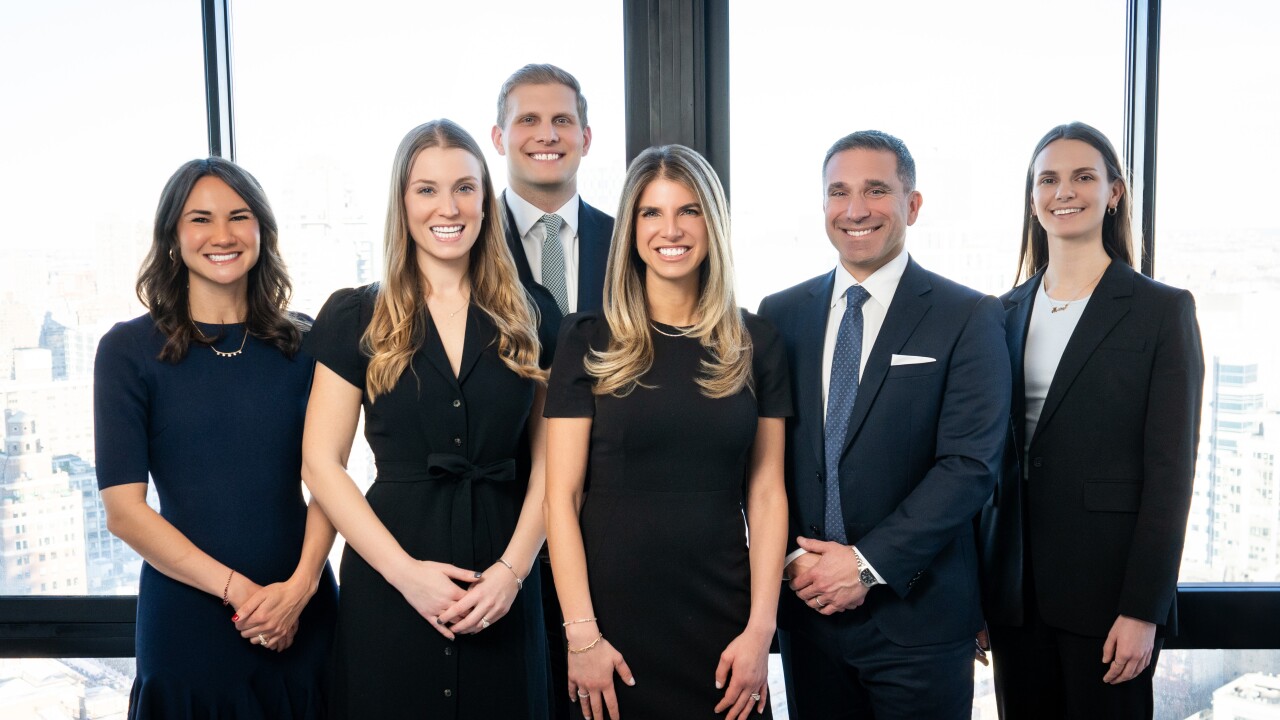The interest in security among independent advisors seemed to have ratcheted up. Perhaps it's because major custodians have acted to heighten advisor awareness of attacks, or it could be increased media coverage of Chinese hackers targeting U.S. websites - but either way, it was one of the key questions for attendees at February's Technology Tools for Today conference.
Of course, the people who descended on Miami for the event, sponsored by my firm, had countless individual interests and concerns. But over the course of all the sessions, security was one of three issues that drew wide interest, making it worth a deeper look (along with custodian-assisted technology and Windows 8 usage).
SECURITY UPDATES
One starting point for security is strong passwords - and that, says CFP Bill Winterberg, the founder of planning technology website FPPad and also a regular blogger for Financial Planning, is a numbers game. The longer the password, the less likely it is to be cracked. For maximum protection, Winterberg suggests passwords that are at least 40 characters long. How do you remember multiple long passwords? Use a password manager such as RoboForm, KeePass, LastPass and 1Password.
But there are other, more complicated issues. While many advisors are more focused on external attacks, internal threats are actually more common. These threats can be deliberate hacks by a rogue employee, but they can also be unintentional, as when an employee visits rogue websites or connects an infected device to a corporate network.
Winterberg also warns about ploys hackers use to trick advisors. The techniques vary, but the goal is to get employees to divulge information to hackers. This could take the form of an email message that appears to be from a client requesting that money be wired to a bank account. Or it could be a USB drive with an enticing label dropped in a parking lot that will instantly launch a network attack when plugged into an office computer.
The keys to prevention, Winterberg says, are authentication, verification and a healthy dose of suspicion. All employees need to be educated regularly about threats and be told to verify the identity of anyone who requests information or money movements.
MOBILE SAFETY
Another growing area is mobile security. Since most advisors now carry smartphones and/or tablets, these devices must be protected. Here are steps that should be taken:
* Establish a password for your device.
* Establish a password for your SIM card (some carriers allow you to do this, but the procedure varies by carrier).
* Create a screen lock that displays your email or phone number so that a good Samaritan can return your device if found. The If Found Lock Screen app for iOS is available for 99 cents. Lockscreen Text for Windows 8 phones is also 99 cents. Contact Owner for Android is free on Google Play.
* Enable location, access restriction and data wipe services like Find My iPhone/iPad and Find My Phone for Windows 8 phones.
* Install only trusted apps.
* Install antivirus software on your mobile devices.
* Use a VPN service when on a public Wi-Fi network. Norton Hotspot Privacy is one solution from a well-known brand.
CUSTODIAL SUPPORT
Another big trend was the accelerated development of new custodian-supplied or -assisted technology and custodian-supported integrations.
TD Ameritrade staff members were in Miami to discuss the recently announced cloud version of iRebal. This sophisticated rebalancing software - which will offer deep integration with Veo, TD Ameritrade's advisor platform for client onboarding, trading and billing - will be free for TD Ameritrade advisors, but its use will be limited to assets custodied at TD Ameritrade. Once it becomes available, iRebal's cloud version should be a big help for the TD Ameritrade firms that do not currently use intelligent rebalancing software.
In a similar vein, Scottrade announced that its advisors will receive free access to MyVest's modeling and rebalancing features. This will be deeply integrated with the Scottrade advisor platform, and it will apply exclusively to assets custodied at Scottrade.
According to Chuck Lewis, MyVest's vice chairman, this solution can monitor portfolio drift at the household level and suggest trades to bring the portfolio back into balance. If advisors approve of the suggestions, the trades can be executed at the touch of a button. For advisors who wish to outsource the investment process, Scottrade will offer managed portfolio services through MyVest, as well.
In another effort to bring a comprehensive solution to its advisors, Scottrade will offer a package that includes both Redtail CRM and Redtail Imaging for $60 a month - a significant discount from the list price. Not only will Redtail CRM be integrated with the Scottrade advisor website, but there will be centralized billing through Scottrade Advisor Services.
This will allow advisors to select, turn on and pay for both the Redtail and MoneyGuidePro financial planning software through Scottrade.
TOUCH-SCREEN WORKSTATIONS
TradePMR, a custodian with headquarters in Gainesville, Fla., unveiled Fusion, its next-generation advisor workstation at T3. It is the first custodial workstation optimized for touch-screen devices. Fusion allows advisors to work with all sorts of computer devices, including Windows 8 computers, iPads, Android devices, Microsoft Surface tablets and most popular smartphones.
Dennis Suppe, TradePMR's chief technology officer, demonstrated how advisors can prepare for client meetings by pinning statements, performance reports and other documents to their Fusion start page, and then detach from the network seamlessly using their mobile devices when meeting with clients. Another key feature is the ability to produce comprehensive analytics. A graphical dashboard view of asset allocation, top accounts and other critical information is readily available, giving advisors up-to-the-minute data.
"This state-of-the-art platform will help advisors better manage their practice and better serve their clients," Suppe says.
Ed O'Brien of Fidelity provided me with an update on Fidelity's WealthCentral, a web-based platform for advisors. According to O'Brien, all of Fidelity's 3,000-plus RIA firms were slated to migrate to WealthCentral by the end of the first quarter, enabling 40,000 users to log in every day.
"WealthCentral has been a huge success for us, but this is only the beginning," he says. "We will continue to improve the functionality of the platform, simplify workflows and provide deep integration with third-party providers." The ultimate goal is simplicity, he says: "We want to offer technology that makes it simple for advisors to serve their clients, and simple to work with Fidelity."
And at Schwab, 588 advisors representing $163 billion in assets have been benefiting in some way from the firm's Intelligent Integration initiatives, says Brian Shenson, vice president for advisor technology. He also emphasized the company's success with advisor-focused mobile apps, which now have about 1,500 unique iPad users and about 2,900 unique iPhone accounts. The Schwab Android app for advisors is currently making its debut.
Another area of concentration for Schwab is further integration of customer relationship management software with the firm's back office. For example, within a few months, advisors using Schwab's OneView Integrated Office platform should be able to initiate money movements from within the CRM, eliminating the need to log in separately to the Schwab back office.
WINDOWS 8
In the weeks leading up to the T3 Conference, I was encountering widespread skepticism about advisors' need to acquire Windows 8 devices. Some of that doubt seemed to dissipate as the show progressed. At one Windows 8 session, Tom Feher of Microsoft demonstrated a number of new Windows 8 devices, highlighting the vast array of sizes and shapes that this version can accommodate. I also discussed the faster Windows 8 boot times, the superior security, the improved interface for configuring multiple monitors and many other built-in features. Windows 8 devices, including phones and tablets, can natively support Microsoft Office applications, a huge plus for advisors.
Suppe of TradePMR demonstrated how apps built for Windows 8 can make an advisor's life easier. He showed, for instance, how advisors can pin just about anything to the start screen, how live tiles can supply information at a glance without opening an application, and how the start screen can be customized so that each user can immediately have the objects he or she needs.
FinFolio, one of the few firms demonstrating a production Windows 8 application at the conference, generated a good deal of booth traffic. The advisors I spoke with were very impressed by the quality of the graphics and the touch-screen functionality that FinFolio offers.
After three days of exposure to Windows 8 hardware and software from a variety of providers, quite a few attendees appeared ready to ditch their existing devices in favor of a new Windows 8 device. But since T3 attendees are probably more tech-savvy than the average advisor and advisors in general are not early adopters, it seems doubtful that Windows 8 will become the dominant operating system for advisors in the immediate future.
Still, a slow but steady migration to Windows 8 computers seems to be under way. It remains to be seen if phones and tablets will also participate in this migration. The ability to natively support MS Office applications could be a deciding factor for some advisors.
Joel Bruckenstein, a Financial Planning columnist, is co-creator of the Technology Tools for Today newsletter, conference series and technology guides for advisors, including Technology Tools for Today's High Margin Practice. For more information, visit JoelBruckenstein.com.





